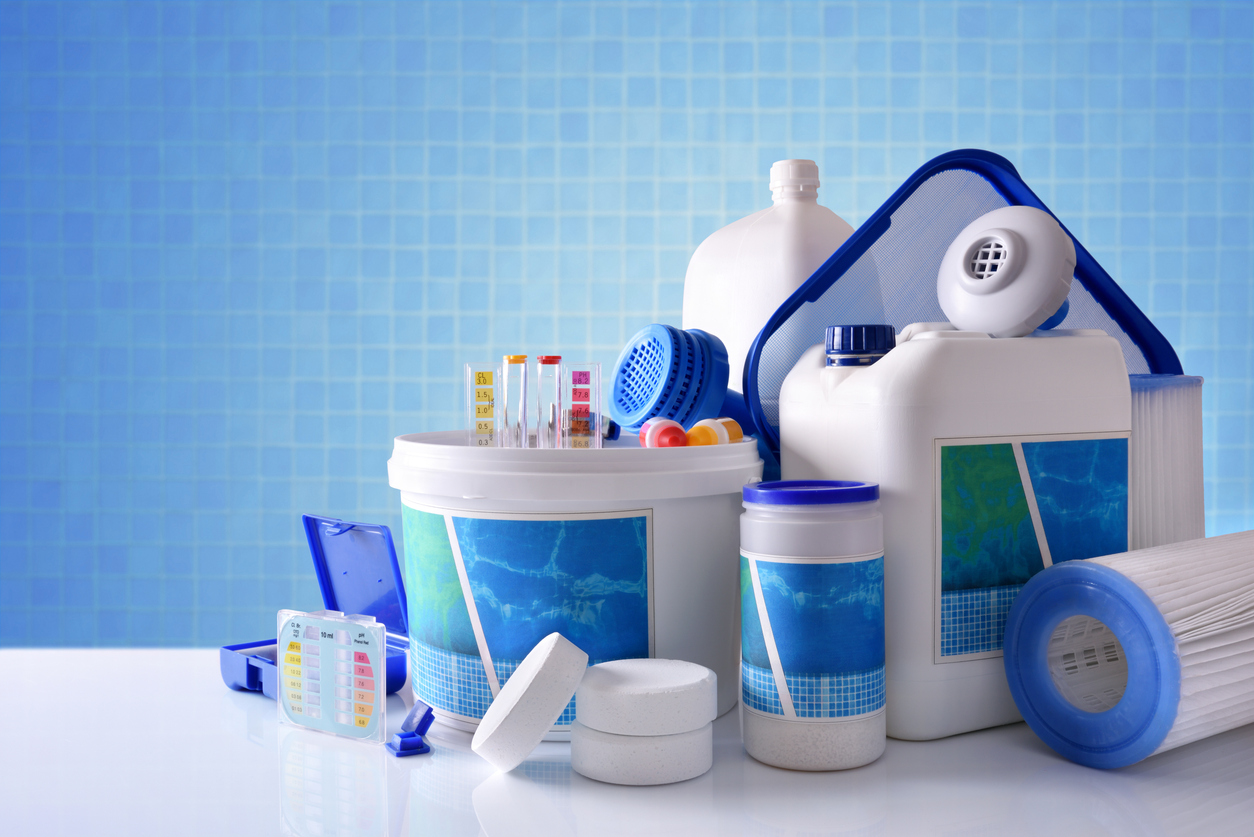The Chemistry Behind a Comfortable Swim: Water Imbalance 101

When you take a dip in the pool, it's easy to forget you're swimming in a delicate chemical ecosystem. Factors like pH, total alkalinity, and calcium hardness work together to keep water comfortable, clear, and safe while protecting your pool's surfaces and equipment. Understanding and maintaining these three elements ensures an optimal swimming experience and prevents costly maintenance issues.
The Big Three: pH, Total Alkalinity, and Calcium Hardness
For most residential pools, focusing on pH, alkalinity, and calcium hardness is sufficient to maintain balance.
pH: The Foundation of Water Chemistry
Definition: pH measures how acidic or basic your pool water is on a scale from 0 to 14, with 7 being neutral.
Ideal Range: 7.4-7.6, which is closest to the pH of human eyes and mucous membranes, minimizing irritation.
Why It Matters
Low pH: Corrodes metal parts, irritates eyes and skin, and reduces sanitizer efficiency.
High pH: Causes cloudy water, scaling, and also weakens chlorine's effectiveness.
Total Alkalinity (TA): pH Stability Control
Definition: TA measures the concentration of alkaline substances (mainly bicarbonates) in your water.
Ideal Range: 80-120 ppm
Why It Matters
- Acts as a buffer to prevent pH fluctuations.
- Low TA: pH swings erratically, making it difficult to maintain water balance.
- High TA: Makes pH adjustments difficult, requiring more acid to lower levels.
Calcium Hardness: Protecting Pool Surfaces
- Definition: Indicates how much dissolved calcium is present in the water.
- Ideal Range: 200-400 ppm (though fiberglass and vinyl-liner pools can remain on the lower end).
Why It Matters
- Low Calcium: Water becomes aggressive, corroding metal components and etching plaster.
- High Calcium: Causes scale buildup on surfaces, heaters, and salt cells, leading to cloudy water and reduced equipment efficiency.
How These Factors Interact: The Langelier Saturation Index (LSI)
The LSI formula considers pH, alkalinity, calcium hardness, water temperature, and total dissolved solids.
- Balanced - No risk of corrosion or scaling.
- Corrosive - Water aggressively dissolves metals and surfaces.
- Scale-Forming - Excessive calcium deposits clog equipment and stain pool walls.
Testing and Adjusting Your Pool Chemistry
Recommended Testing Frequency
- At least once a week during swimming season.
- Every few days in hot weather or during heavy pool use.
Best Testing Tools
- Liquid test kits - Provide precise readings and are preferred by professionals.
- Test strips - Convenient for quick checks, though slightly less accurate.
- Digital testers - High-quality devices can provide lab-level accuracy but require a higher investment.
Adjustment Order (To Avoid One Change Affecting Another)
- Total Alkalinity (TA) First - Adjust this first to stabilize pH.
- pH Second - Once TA is stable, fine-tune pH levels.
- Calcium Hardness Last - Adjust only when necessary, as it fluctuates less frequently.
How to Adjust Levels
- To Raise Alkalinity - Add sodium bicarbonate (baking soda).
- To Lower Alkalinity or pH - Use muriatic acid or sodium bisulfate.
- To Raise pH - Add soda ash (sodium carbonate).
- To Adjust Calcium - Add calcium chloride to increase levels or dilute water if too high.
Why Balanced Water Matters for Swimmers & Pool Equipment
Properly balanced water:
- Prevents eye and skin irritation by keeping pH stable.
- Enhances chlorine efficiency, ensuring proper sanitation.
- Protects metal parts (heaters, ladders, pumps) from corrosion.
- Prevents scale deposits that can clog plumbing and damage tile surfaces.
- Improves swimmer comfort, making water feel fresh instead of harsh or slimy.
Maintaining pH, total alkalinity, and calcium hardness isn't just about hitting the right numbers on a test kit-it's about ensuring a comfortable swimming experience and protecting your pool's structure. With routine testing and proper chemical balancing, you can keep your water crystal clear, safe, and enjoyable all season long.
